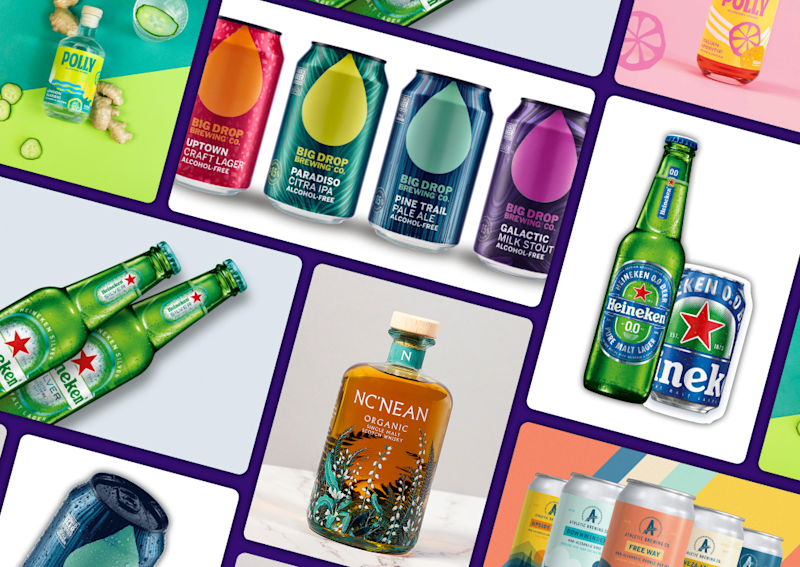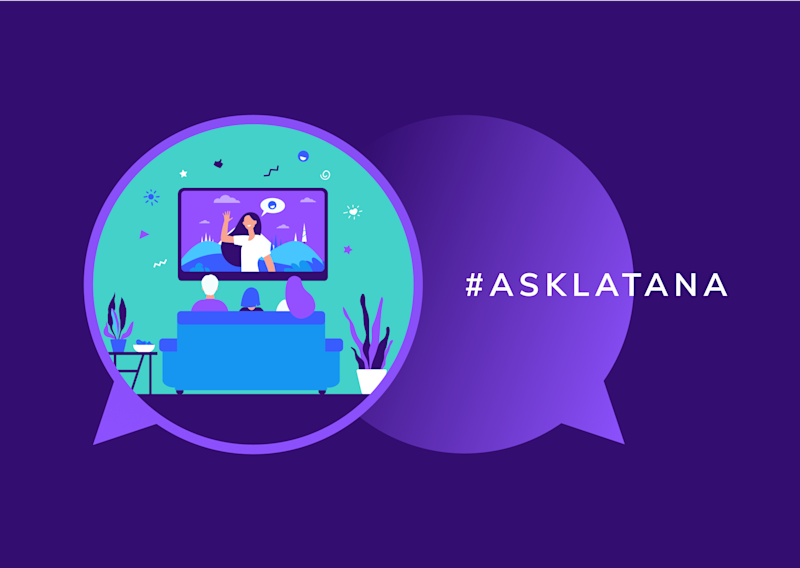A 2021 study conducted by Thinxs Inc. found that 76% of teenage students in the US are “taught more about the biology of frogs than the human female body at school."
Let that sink in for a moment...
Another study found that 76% of teenagers in the US feel that there’s a negative association that periods are “gross and unsanitary” and another 65% say society teaches people to be ashamed of their periods.
Stats like these are discouraging, to say the very least. But when dealing with taboo subjects like menstruation and periods, they’re not surprising — we’re fighting an uphill battle.
And the stigma, shame, and backlash that period brands often experience when trying to advertise and educate the population is a perfect example of how far we still need to go in terms of normalizing menstruation.
This article will take a look at how different societies have dealt with menstruation throughout history to see how attitudes have changed and explore how we’ve (hopefully) evolved.
Plus, some unique insights from Lena Koskela, the Marketing Manager at Mooncup® menstrual cup, on what it’s like working for a brand that’s breaking down important barriers for people who menstruate.
Finally, we’ll close with a few tips on how you can grow your brand if your products or services are also part of a “taboo” industry.
Menstruation Through the Years
Source: leidenmedievalistsblog
As far back as one can research, there’s shame and stigma surrounding menstruation. And because of this sad fact, there isn’t much documentation on how people dealt with their periods before the modern era.
However, from what we can piece together, some of the earliest records related to menstruation suggest that Ancient Greeks used something akin to a tampon — a piece of wood wrapped in lint.
Later records indicate that women in Medieval times were actually denied herbal aids to lessen period cramps due to religious shame — after all, cramps were “a reminder of Eve’s original sin.” And Ancient Romans even believed that menstrual blood had the power to destroy crops and sour wine.
Interestingly, there’s a common thread: No matter the century or culture, menstruation has largely been considered a burden at best and a curse at worst. And for these reasons, no one talked openly about periods for most of history.
What many would consider traditional “feminine hygiene” products first popped up in the early 20th century — when combat nurses made the first sanitary napkins out of a highly absorbent fabric used in soldiers’ bandages.
Tampons became the norm in the 1930s and 40s, but it wasn’t until 1972 that a commercial for a tampon aired on TV. However, that didn’t mean that the language and visuals weren’t heavily restricted — do you remember ever seeing anything resembling actual blood used?
It’s clear that people who menstruate have dealt with shame and prejudice since the beginning of time — but shouldn’t we be past it by now? Unfortunately, the answer is no.
People still respond negatively to TV ads that dare to show a hanging tampon string and social platforms like Facebook ban ads that depict realistic period blood.
In a 2021 study, 40% of teenagers who menstruate said they were confused and unprepared for their first period. Add in feelings of shame and you have a recipe for disaster — scared, uninformed, embarrassed youth without access to the tools and information they need.
More recently, it’s been period brands that champion sustainable products that have been receiving the heaviest criticism. From reusable cups to period underwear, brands like Mooncup and Primark have been doing the nitty-gritty work of educating the public about sustainable period alternatives.
So, how is the public responding in 2021 to a brand like Mooncup? Let’s take a look.
Breaking Down Barriers: An Interview With Mooncup®
Source: Mooncup
In an effort to gain insight into how a modern period brand deals with stigma and backlash, we spoke with Lena Koskela from Mooncup — a brand that’s been working to educate the public about sustainable period products since 2002.
Here are her insightful answers to our questions:
1. What have been the biggest hurdles you’ve dealt with as a company?
Lena: “When we first started, reusable period products were seriously niche. There was no category for sustainable period products on supermarket period aisles. People didn’t talk about periods and were revolted by what we were doing.
“To bring reusable period products to the mainstream, we needed to bust some taboos. Our early work was all about chipping away at the taboo around periods, playfully challenging the ‘yuck’ factor, and raising awareness of the issues with disposables. We wanted people to make an informed choice about their period products.
“Our ground-breaking advertising campaigns on the London Underground, guerrilla stickering of toilets around the country, and powerful word of mouth campaigns made the ‘Mooncup’ a household name (at least among menstruating folk) and paved the way for reusable period products around the world.”
2. Do you think you’ve seen growth/a change in public reception over the last few years to reusable cups?
Lena: “Definitely. The shift to environmentally friendly period products has been particularly strong among younger people, aged 18-24. We have seen a 101% increase in online sales for this demographic in the UK since the start of the pandemic.
“We’ve long been aware that Mooncup is the brand most people know when it comes to reusable period product options. It’s the result of nearly two decades of pioneering work to bring a third category to period aisles around the world.”
3. What’s the most surprising thing that people complain about?
Lena: “There’s still stigma around periods! A couple of years back when we were casting for our Period Drama advert (which involved a horse in classic period drama style).
“When the horse owner discovered the ‘kind of ad’ his proud steed was going to appear in, the owner pulled the horse – he didn’t want period products to sully his horse’s reputation! Luckily, we found a more open-minded horse to fill his hooves.”
4. Why do you think having period-centric brands is important?
Lena: “Because every day, some 800 million people around the world menstruate. While periods are a natural process, poverty and stigma have a huge impact on young people’s education.
“We passionately believe that everyone should have the basic right to menstruate without shame or stigma.”
As sad as it looks, even well-known brands like Mooncup still deal with backlash from the public. However, their dedication to busting taboos and making sustainable period products mainstream is beyond admirable — and can teach us all a thing or two.
What Can You Learn?
When it comes to operating in a taboo industry, brands have to be prepared for anything: public backlash, ads getting banned, boycotts, hateful comments, etc.
But that doesn’t mean that their products and services are less important than those in the mainstream, it just means they have to work harder.
So, what are the main takeaways from this article and our interview with Lena?
1. Take It One Step At A Time
Though it can be tempting to go “all-in”, when dealing with taboo industries and products, smart marketing and brand managers know that you need to take things one step at a time.
Remember Lena’s words about Mooncup’s early work. It was centered around dispelling the taboo around periods by challenging the “yuck factor” and educating the public about the issues with disposable period products.
Before they could dive into making themselves a household name, they needed to get people talking about periods — from ads in the tube to “guerilla-style” stickering campaigns to strong word-of-mouth.
When looking to change a culture’s approach to or feelings about a taboo subject, education is the first step. You can’t expect people to go from step 1 to step 10 immediately.
So, when planning your own brand campaigns, create a plan that involves multiple stages — that way you can do the hard work of “busting taboos” in a smart, effective way.
2. Focus on Your Target Audience, the Others Come Second
Any brand manager worth their salt knows that identifying your target audience is one of the first steps to building a strong brand strategy.
For those working in a taboo industry — such as period or sex education brands — this is more important than ever. Why? Because you’ll never be able to convince everyone of your products’ importance, and you’ll waste precious time and resources trying to do so.
Thankfully, speaking to your target audiences should be a bit easier.
At Mooncup, they found that the “shift to environmentally friendly period products (was) particularly strong among younger people, aged 18-24”. And while they’re sure to have more than one target audience, it makes sense to focus time and resources on the consumers who are most likely to be open to and use your products.
While it’s always a good idea to break down barriers for consumers of all ages, genders, and locations — brands from taboo industries should start with their target audiences first. The others will come next.
3. Always Remember the “Why”
When you’re dealing with consistent hate and backlash day in and day out, it can become quite discouraging to push forward. And those who work in taboo industries deal with such backlash in spades.
However, at the end of the day, you have to keep your vision and your values in mind. As Lena brings up in her final remarks, as a brand, Mooncup “passionately believe(s) that everyone should have the basic right to menstruate without shame or stigma.”
When 70% of teenagers who menstruate report that they are especially self-conscious of their periods in a school environment and 7 out of 10 have unanswered questions about their periods, it’s clear that the work Mooncup is doing is still vitally important.
This knowledge combined with their vision is what keeps brands like Mooncup going, and it’s why they continue to push and educate — to make the world a better place for everyone, but especially for people who menstruate.
Final Thoughts
Building a brand from scratch is hard enough as it is — building a period brand is on another level.
Period brands — and anyone who dares to discuss menstruation openly — deal with negative feedback, abusive language, and violent backlash on a daily basis.
Don’t believe us? Just look at some of the comments we received when we recently posted an article entitled “Menstruation In Advertising — Breaking the Ultimate Taboo”.
While each message was unique, they all revolved around a similar theme: Periods are not taboo.
Oh, and also — stop talking about them because they’re gross.
Interestingly enough, the irony seemed to be lost on these irate keyboard warriors — that by calling out and shaming this article as a “non-existent taboo”, they’re really just proving our point: You can’t speak openly about something like menstruation without really upsetting some people.
Ideally, we’d love to live in a world where people feel comfortable and safe discussing historically taboo subjects like their periods. But until then, brands like Mooncup, Thinx, and Primark will continue to educate and push for the end of this particular taboo.
If you’re looking to start your own period (or similarly taboo) brand — keep our and Lena’s tips in mind.
And if you want to know how your target audience feels about your period brand, try using brand tracking software. It can help you determine your levels of brand awareness, consideration, and usage, as well as different associations consumers have for your brand.
After all, knowledge is power. And knowing how consumers view your brand is vital to your overall success.





